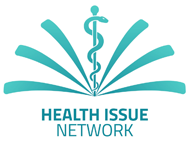Clinical reasoning in multimorbidity conditions asks for the ability to anticipate the possible evolutions of the overall health state of a patient and to identify the interactions among the concurrent health issues and their treatments. The HIN (Health Issue Network) approach, as Petri Nets-based formal language, is introduced as capable of providing a novel perspective to facilitate the acquisition of such competencies, graphically representing the network among a set of health issues (HIs) that affect a person throughout their life, and describing how HIs evolve over time. The need to provide a more immediate user-oriented interface has led to the development of f-HIN (friendly HIN), a lighter version based on the same mathematical properties as HIN, from which stems in turn the f-HINe (friendly HIN extracted) model, used to represent networks related to either real patients’ clinical experiences extracted from electronic health records, or from teacher-designed realistic clinical histories. Such models have also been designed to be embedded in a software learning environment that allows drawing a f-HIN diagram, checking for its format correctness, as well as designing clinical exercises for the learners, including their computer-assisted assessment. The present paper aims at introducing and discussing the f-HIN/f-HINe models and their educational use. It also introduces the main features of the software learning environment it was built upon, pointing out its importance to: (i) help medical teachers in designing and representing the context of a learning outcome; and (ii) handle the complex history of a multimorbidity patient, to be conveyed in Case-Based Learning (CBL) exercises.
Keywords
CASE-BASED LEARNING
HEALTH ISSUE NETWORK
LIVING LAB
PETRI NETS
CLINICAL REASONING IN MULTIMORBIDITY
EDUCATIONAL SOFTWARE
MEDICAL EDUCATION
SOFT SYSTEM METHODOLOGY
Reference
Pecoraro, F.; Ricci, F.L.; Consorti, F.; Luzi, D.; Tamburis, O. The Friendly Health Issue Network to Support Computer-Assisted Education for Clinical Reasoning in Multimorbidity Patients Electronics. 2021, 10, 2075.
AllegatiPecoraro, F.; Ricci, F.L.; Consorti, F.; Luzi, D.; Tamburis, O. The Friendly Health Issue Network to Support Computer-Assisted Education for Clinical Reasoning in Multimorbidity Patients Electronics. 2021, 10, 2075.






